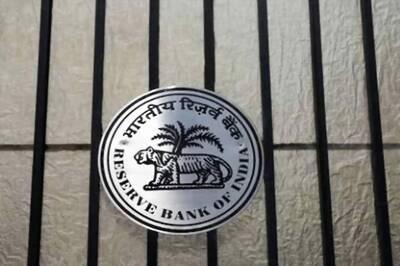
views
BANGKOK: Below is a brief history of Thai protest and coups.
1932 – The Siamese Revolution ends centuries of absolute royal rule, officially establishing a constitutional monarchy and democracy in Siam, later called Thailand.
1933 – The Boworadet Rebellion, aimed at restoring an absolute monarchy, is put down by the ruling People’s Party, a military-bureaucrat alliance.
1946 – King Bhumibol Adulyadej becomes monarch aged 18. During his 70-year reign, Thailand sees 10 coups and 17 constitutions.
1947 – A coup by royalist-military forces ends the People’s Party’s political role.
1957 – “Lese majeste” laws against insulting the king, dating back to the days of absolute monarchy, are carried over into a new Criminal Code.
1973 – Student pro-democracy protests end in a crackdown in which 77 people die, according to official estimates. On Oct. 14, King Bhumibol intervenes and announces the resignation of the military government. A period of democracy follows.
1976 – Two military leaders, ousted in 1973, return to Thailand. Protests follow and dozens are killed on Oct. 6. Later that day, there is a military coup. The king appoints a new prime minister. The maximum penalty for insulting the monarchy is raised from 7 to 15 years.
1976-1991 – A period of military-royalist government ensues, with some roles for elected politicians.
1992 – More than 50 protesters are killed in the “Black May” crackdown on demonstrations against another coup. King Bhumibol subsequently intervenes; a period of democracy follows.
2001 – Billionaire businessman Thaksin Shinawatra is elected prime minister on a populist platform. Within a few years, Thailand is riven by rival demonstrations between Thaksin’s Red Shirt supporters and Yellow Shirt opponents, who call Thaksin corrupt and disloyal to the monarchy. These will drag on for a decade.
2006 – The military overthrows Thaksin after months of Yellow Shirt protests.
2007 – A Thaksin-allied party wins the post-coup elections.
2008 – Yellow Shirts seize Bangkok’s two international airports for 10 days, ending their occupation after a court dissolves the ruling pro-Thaksin party. A new government led by another party is formed.
2010 – Red Shirts occupy central Bangkok for 10 weeks, culminating in a crackdown in which at least 90 people are killed.
2011 – A Thaksin-allied party wins elections. More anti-Thaksin protests follow.
2014 – Army chief Prayuth Chan-ocha seizes power.
2016 – King Bhumibol dies, succeeded by his son King Maha Vajiralongkorn.
2019 – New elections are held. Prayuth’s new pro-army party is declared the winner. Opposition parties complain that the process was rigged, which Prayuth denies.
2020 – Court dissolves the opposition Future Forward Party. Its founder Thanathorn Juangroongruangkit denies wrongdoing in separate criminal charges over criticism of the military. Student-led protests begin.
Disclaimer: This post has been auto-published from an agency feed without any modifications to the text and has not been reviewed by an editor
Read all the Latest News, Breaking News and Coronavirus News here

















Comments
0 comment